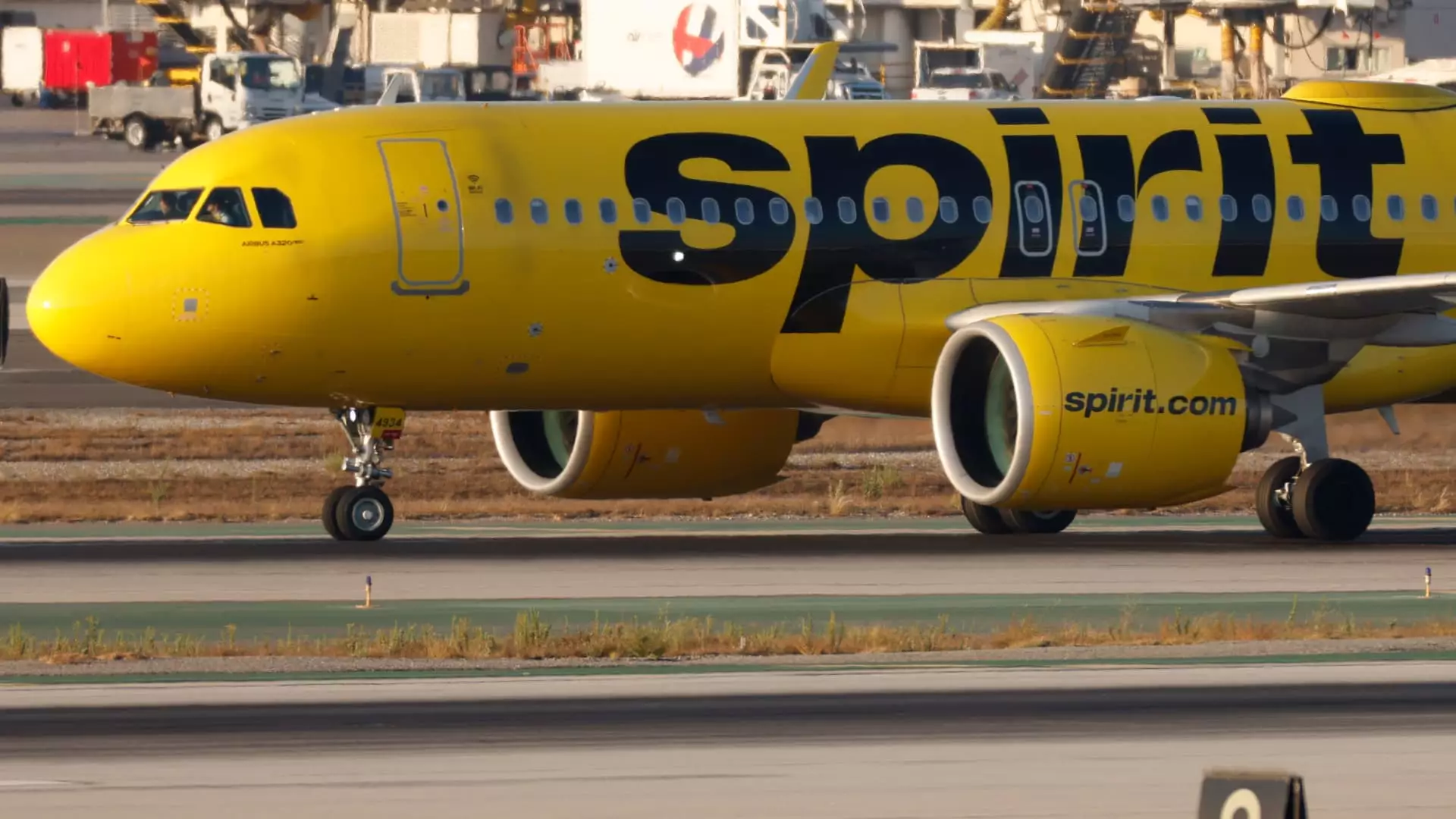Spirit Airlines, a name synonymous with low-cost air travel, has hit a bumpy patch in its journey, filing for Chapter 11 bankruptcy protection after years of financial turbulence. Established with the mission of making air travel affordable for the masses, Spirit has famously provided bargain fares, but recent events have cast a shadow on its viability. From challenging industry competition to mounting operational costs, the airline’s struggles have been exacerbated by a failed merger attempt and evolving consumer expectations.
The announcement of Spirit’s bankruptcy came on a Monday morning as the airline began to chart a course for recovery. A deal has been established with bondholders, amounting to an initial $300 million in debtor-in-possession financing to maintain operations through this transitional period. Spirit insists that despite these challenges, its services will continue unabated, offering reassurance to customers eager to book flights and utilize their existing tickets and loyalty points.
Challenges in the Skies: The Factors Behind the Downfall
The tumultuous journey to this point can be attributed to several critical factors. Firstly, Spirit faced an engine recall issue that left many of its jets grounded, further hindering its capacity to meet rising consumer demand. Secondly, the aftermath of the COVID-19 pandemic saw an increase in operational costs across the aviation industry, a burden that Spirit was ill-equipped to absorb. The airline’s attempts to pursue a merger with JetBlue were thwarted by a federal court’s antitrust ruling earlier this year, illustrating the regulatory hurdles that have tightened the market landscape.
Moreover, Spirit has seen a staggering drop in its stock value, plummeting over 90% within the year as financial woes accumulated. The airline’s market struggles have led to delays in critical negotiations regarding its credit line, revealing the precarious nature of its financial health. In response, Spirit has initiated drastic measures, including the sale of aircraft, which has enabled the airline to maintain liquidity in a narrow market for planes.
Filing for Chapter 11 is a significant step for Spirit, marking a departure from its previous operations. The U.S. Bankruptcy Court in the Southern District of New York will oversee this restructuring, during which it is anticipated that the airline will re-evaluate and streamline its business model. The announcement indicated a reduction in its existing equity and a pathway to deleverage approximately $795 million in funded debt, aiming for a revitalized post-bankruptcy entity.
While the bankruptcy moves create uncertainty, Spirit emphasizes that passengers can continue booking flights without interruption. CEO Ted Christie assured customers that all services, including ticket sales and loyalty programs, will remain operational, signaling a cautious optimism amidst structural changes. However, with an anticipated reduction of about 330 pilots—following a previous cut of 200—tighter operations will likely become the norm, narrowing the very low-cost appeal that drew many customers initially.
To survive this turbulent phase, Spirit will need to adapt to the changing priorities of travelers. The airline’s historical model of ultra-low-cost fares has faced increasing scrutiny as consumers now lean toward airlines that offer added value, such as improved seating arrangements and bundled services. This shift comes at a time when larger carriers, including American and Delta, have begun emulating Spirit’s original model by introducing basic economy fares.
In a bid to augment its competitive edge and drive revenue, Spirit has launched new initiatives, including bundled fare options that provide travelers with more choice without sacrificing affordability. These efforts to expand beyond a strictly low-fare structure may help Spirit capitalize on additional revenue streams while addressing evolving passenger preferences that demand more from budget airlines.
Looking toward the future, analysts speculate on the potential for Spirit and Frontier Airlines to rekindle talks for a merger. Given the turbulent state of the airline industry, collaboration may provide mutual benefits, allowing a larger, more stable entity to emerge from the ashes of current broken models. Yet, the past judgments surrounding such mergers, particularly the antitrust issues raised in the JetBlue saga, raise pressing questions about the viability and strategic moves going forward.
As Spirit navigates the complexities of bankruptcy, the path to recovery will hinge not only on financial restructuring but also on its ability to resonate with the current market and consumer sentiments. It’s clear that the airline, once a beloved choice for budget-conscious travelers, must refashion itself in a manner that aligns with evolving expectations while thoughtfully addressing cost management and operational efficiency.
The story of Spirit Airlines serves as a cautionary tale within the aviation sector—underscoring the fragile balance of affordability, operational demands, and competitive pressures that define this industry. How effectively Spirit adapts to these challenges may ultimately dictate its fate in the skies.

